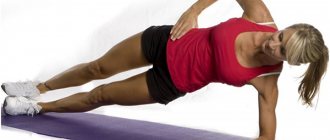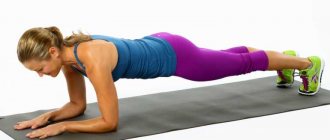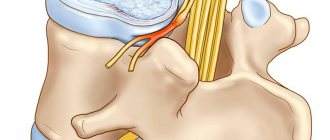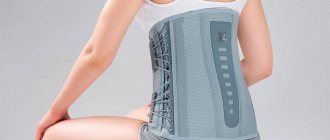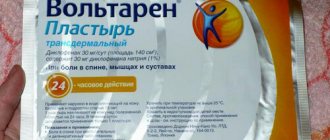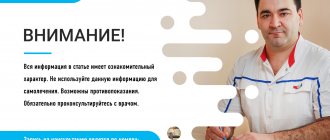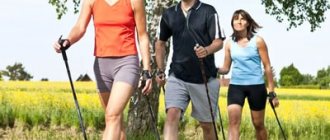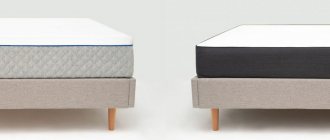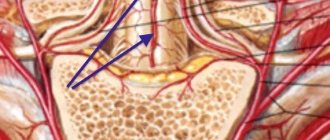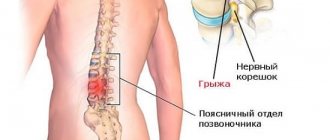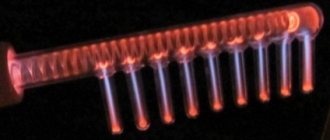Physical activity is one of the main conditions in the treatment of spinal diseases, including intervertebral hernia. But if there is no doubt about the benefits of swimming or special exercises, then regarding running the opinion of experts is not so clear. Let's consider whether it is possible to run with a herniated lumbar spine, and how such a load affects the affected tissues.
Is it possible to run with a herniated lumbar spine?
Features of the disease
A hernial protrusion is formed as a result of damage to the fibrous membrane of the disc. Depending on the size of such damage, the hernia can be very tiny or quite large, which affects the severity of symptoms. Sometimes a person may be completely unaware of the presence of a hernia until it is discovered by chance, for example, during an X-ray examination for another reason. As long as the hernia does not compress the vessels and nerve fibers passing through the spinal canal, the patient does not feel any particular discomfort. The situation changes if compression of the roots occurs - severe pain of a pulling or shooting nature occurs in the back, which can no longer be ignored.
When the hernia begins to compress the nerve roots, severe back pain occurs
In the lumbar region, symptoms are usually severe, since this is the area that is most vulnerable. The presence of an intervertebral hernia in the lower back threatens pinching of the sciatic nerve, or sciatica, and in the most severe cases – paresis and paralysis of the limbs. Additionally, disturbances in the functioning of the intestines and genitourinary organs may be observed. Even a small lumbar hernia causes severe discomfort, excruciating back pain, and paresthesia of the legs.
Very often, the appearance of a hernia in the lumbar region is the cause of sciatica - inflammation of the sciatic nerve
Important! In this condition, any careless movement can lead to complications, and therefore sports that involve intense stress on the spine are prohibited. This applies, first of all, to strength sports, team games, jumping, short and long distance races, and acrobatics. Sharp jerks and turns of the body, as well as vibrations from the feet hitting the ground when running, cause microtraumas of soft fibers, displacement of the vertebrae, increased swelling and inflammatory processes.
Why does walking cause pain?
Injuries. The danger is that the hernia may not appear immediately, but after several years, when the spine is weakened by constant stress. A sharp change in lifestyle. If a person, after a sedentary lifestyle, suddenly becomes actively involved in sports and does not calculate the load, a hernia may appear. To prevent sports from becoming the cause of pathological processes, the intensity of training must be increased gradually. Congenital pathological processes. If the patient has a history of any problems with muscles or bone tissue, he constantly needs preventive procedures that prevent the formation of a hernia. Among them there is always therapeutic gymnastics. Sudden weight change. First of all, we are talking about weight changes during pregnancy, when the body cannot quickly adapt to increasing loads. To evenly distribute the weight, experts recommend wearing a special corset or bandage. Incorrect power system. According to statistics, spinal hernias most often occur in people who do not eat meat. The fact is that only animal proteins contain essential amino acids and proteins that nourish the spine. Vitamin deficiency. To maintain the spine, the body needs a whole complex of vitamins
There are no blood vessels in the intervertebral discs, so it is important that the surrounding tissues have enough nutrients to nourish the spine.
It is important! With proper treatment and compliance with all doctor’s recommendations, degenerative processes in the spine can be significantly slowed down. Walking is a natural and typical movement pattern for a person who is born to be upright and not crooked.
Infectious diseases, inflammation and injuries affect the body, this is reflected in the performance of muscles that receive common innervation with the affected area
Walking is a natural and typical movement pattern for a person who is born to be upright and not crooked. Infectious diseases, inflammation and injuries affect the body, this is reflected in the performance of the muscles that receive common innervation with the affected area.
The step is performed by the iliopsoas muscle and the rectus femoris muscle. The leg is extended at the knee joint, resting on the heel allows you to engage the tibialis posterior and relax the calf muscle and the back of the thigh. The second leg pushes the toes off the ground thanks to the gluteal muscle. It is with key muscles that problems are associated:
- losing support on the heel, a person does not relax the muscles on the back of the leg, so he begins to walk on bent knees, which turns off the rectus femoris muscle from the movement;
- losing push-off with the fingers, a person does not work the gluteal muscles, and therefore the pelvis loses stability, and pain begins in the sacrum and lower back.
Since almost 80% of people walk incorrectly, walking also provokes discomfort during protrusions.
It is important to consider the movement of your upper body as you move. With each step, the body turns slightly towards the leading leg, and the opposite arm swings forward
The other one bends at the shoulder and moves behind the back. This movement allows you to balance the body due to the oblique abdominal muscles, working the back and shoulder girdle.
Without swinging your arms, there is no turning of the body, and bags and pockets in clothes interfere with this natural movement. An incorrect step with impaired biomechanics can cause a lumbar hernia. Without the gluteal muscle working, the quadratus lumborum muscle will be overloaded. As a result, it will spasm, pull the iliac crest towards the ribs from behind, and rotate the vertebrae. In this case, walking with a herniated spine will certainly cause pain and tension along the sciatic nerve.
Orthopedists believe that the cause of back pain when walking can be wear and tear of the joints, scoliosis, or rotation of the pelvic bones (see Back pain with scoliosis). But the problems listed above appear due to muscle imbalances, against the background of which the step is disrupted long before the pain syndrome.
To study Cupping back massage
Running with a lumbar hernia
Based on the above, it follows that with an intervertebral hernia, not all types of running are prohibited, but only those that require great effort, that is, speed races and long-distance running. During such running, the back muscles experience maximum tension, which leads to microtrauma of the muscle fibers. In addition, the faster a person runs, the harder his feet hit the ground, and damaged discs are not able to absorb such vibrations. As a result, the vertebrae hit each other, microcracks form in the bone tissue, and the soft tissue around the vertebrae is damaged.
Sprinting with intervertebral hernias is absolutely contraindicated
But light jogging over short distances and jogging do not cause much stress, which means they can act as therapeutic therapy for hernias, albeit with some restrictions. Jogging can only be done with the permission of the attending physician, who will determine the permissible degree of load on the spine, taking into account the size and location of the hernia, the condition of the soft tissues and the presence of associated complications. In addition, you need to run correctly, otherwise, instead of benefiting, such exercises will only bring harm to the body.
Jogging with a herniated disc is not prohibited, but only if there are no contraindications
What are we talking about?
In recent years, the disease has been diagnosed even among the younger population. Perhaps this is due to growing physical inactivity - a low-active lifestyle. Many people drive cars and use public transport instead of walking a few stops. The risk group includes people who work in an office or are engaged in heavy physical labor.
Among the etiological factors of hernia formation are:
Traumatization. The patient may not remember that he ever fell or hit his back. However, even such a seemingly “insignificant” incident can become a trigger in the development of the disease. The hernia develops after a short time or several years. The additional stress on the back that a person has been experiencing all this time contributes to deformation, displacement of discs and the formation of hernial protrusions. Change in the nature of activity. A hernia may appear due to the fact that a person was previously engaged in sedentary work, then for some reason suddenly switched to physical labor
Therefore, it is important to do exercises and gymnastics all the time so that there are no sudden overloads. Congenital pathologies
Most often, degenerative-dystrophic changes in bone tissue lead to a hernia. Persons with congenital pathologies of the musculoskeletal system should constantly take preventive measures aimed at reducing the risk of hernia formation. Sharp fluctuations in body weight due to weight loss, pregnancy. In the latter case, it is recommended to wear a support bandage so as not to overstrain your back. Errors in the diet. Lack of vitamins and exclusion of meat from the menu contribute to the development of destructive processes in the spine. The amino acids and some other valuable substances necessary for the spine are found only in animal proteins. In addition, the body needs a lot of vitamins and microelements that maintain the normal functional state of all organs and systems. The spinal column also needs them.
There are other factors that lead to pathological processes in the spine, and which are not always correctable.
The degree and volume of physical activity for a hernia is determined by the doctor.
Contraindications
The main contraindication for running is persistent pain. It occurs when a hernia compresses nerve fibers or the spinal cord, causing the soft tissue to become swollen and inflamed. In this state, you can’t not only run, but also do basic exercises, so that your nerves don’t become even more pinched. After pain relief, you must wait a few days before starting physical activity.
If you feel pain in the lower back, running is strictly contraindicated.
Running is also contraindicated if:
- physical activity causes numbness in the legs, tingling, burning sensation;
- the condition is complicated by vertebral instability;
- there is a viral or bacterial infection in the body;
- Oncological tumors were detected in the spine;
- There are problems with the respiratory system and cardiac dysfunction.
Heart pain and cardiac dysfunction are also a serious contraindication to running.
You should not run if you feel unwell, even if it is a mild illness. The benefits of jogging are only possible if the activity is enjoyable.
Correct exercise technique
Running technique should be given paramount importance
Special attention should be paid to technology, take care of this in advance. Jogging is allowed on the street, in the gym on a treadmill
The treadmill is much more comfortable, the patient should use the machine first. These devices have adjustable speed. Jogging on a treadmill will help you develop a certain speed that does not cause pain or discomfort. The correct practice technique, regardless of the location, is as follows:
- The spine cannot be rocked, fix it in the lower back, monitor the position of the spine during training;
- place your feet correctly, the load from the shocks falls on the area of the big toes - the angle between the feet is small, keep the inside of the feet in one line;
- the movement starts from heel to toe.
When running, do not swing your back, try to keep your back straight, try to relax. Move naturally, choose a comfortable stride range to ensure even load on your feet. By keeping your back in a vertical, stationary position, the risk of injury is reduced; while jogging, try not to tilt your body forward or tilt it back, and maintain correct posture.
Other types of physical activity
In addition to running, other types of physical activity are used in the treatment of osteochondrosis, which are more gentle on the spine, but at the same time have a much better therapeutic effect.
Table. Types of physical activity for osteochondrosis
| Type of occupation | Description |
| Walking with poles is an excellent alternative to running. It has fewer contraindications and does not require prior preparation. The ability to lean on poles while walking allows you to minimize tension in the back muscles, while simultaneously maintaining the spine in the correct position. But for this it is very important to choose sticks of the appropriate length, otherwise instead of a positive effect there will be the opposite result. |
| Exercise equipment | Useful for any pathology of the spine, especially effective for intervertebral hernias. Dosed exercise under the supervision of an instructor helps to quickly strengthen the muscles of the lower back and eliminate the manifestations of the disease. You can exercise only during periods of remission and in the absence of concomitant diseases, but during the acute phase the use of exercise equipment is contraindicated. |
| It is the most effective and safe type of physical activity for spinal hernia. When the body is in water, the load on the spine is removed, the intervertebral space increases, and the nerve endings pinched by the hernia are released. A set of exercises for practicing in water helps to effectively work out the back muscles, improve the functioning of the circulatory system, and at the same time strengthen the immune system. |
When choosing a certain type of activity, you should definitely consult with your doctor so as not to aggravate the condition.
Video - Is it possible to run with a herniated lumbar spine?
In addition to physical activity, therapeutic therapy for lumbar hernia includes several more techniques, because the disease can only be managed with the help of complex effects. You can learn about what these methods are, how effective they are, and how to apply them correctly on our website.
Dangerous changes
The consequences depend on the correctness of emergency care and the method of treatment.
The following pathologies exist:
- Slow bone healing. There is only one way out - leave the plaster or splint for a long period.
- Incorrectly healed fracture. Mobility is impaired and aching pain is present. The pathology is corrected by repeated reduction.
- No splicing process. If the bones have not started to unite after a few weeks, surgery is performed.
- Infection. Osteomyelitis is difficult to cure, but surgery or a long course of antibiotics promotes gradual recovery.
- Stiffness. Occurs due to regular fractures in the same place. Even after long-term treatment, the finger may not heal. Physiotherapy will ease the situation.
- Pain syndrome. After complete recovery, pain occurs in the cold season and with average load on the hand.
- In advanced forms of injury, disability or amputation of a finger is possible.
Physical education - clinics in
Choose among the best clinics based on reviews and the best price and make an appointment
Family
Scoliosis Treatment Center named after K. Schroth
Moscow, st.
Azovskaya, 24, building 2 POM VI/KOM 5,6,7/ET 1 Sevastopolskaya
+7
- Consultation from 1500
- Exercise therapy from 2700
0 Write your review
Family
Medical
Moscow, st.
Arbat, 28/1 building 1 Smolenskaya
+7(495)212-90-98
- Reception from 700
- Neurology from 700
- Physiotherapy from 155
10 Write your review
Family
Medical
Moscow, Maroseyka, 10/1, building 3
Kitay-Gorod
+7
- Reception from 7500
- Manual therapy from 2000
- Massage from 2000
9 Write your review
Show all Moscow clinics
Do you still think that it is impossible to cure your joints?
Judging by the fact that you are now reading these lines, victory in the fight against inflammation of cartilage tissue is not yet on your side...
Have you already thought about inpatient treatment? This is understandable, because joint pain is a very dangerous symptom, which, if not treated in a timely manner, can result in limited mobility. Suspicious crunching, stiffness after a night's rest, the skin around the problem area is stretched, swelling in the sore spot... All these symptoms are familiar to you firsthand.
(function(w, d, n, s, t) { w = w || []; w.push(function() { Ya.Context.AdvManager.render({ blockId: 'RA-264775-2', renderTo : 'yandex_rtb_R-A-264775-2', async: true }); }); t = d.getElementsByTagName('script'); s = d.createElement('script'); s.type = 'text/javascript '; s.src = '//an.yandex.ru/system/context.js'; s.async = true; t.parentNode.insertBefore(s, t); })(this, this.document, 'yandexContextAsyncCallbacks '); var m5c73e28728432 = document.createElement('script'); m5c73e28728432.src='https://www.sustavbolit.ru/show/?' + Math.round(Math.random()*100000) + '=' + Math.round(Math.random()*100000) + '&' + Math.round(Math.random()*100000) + '= 7388&' + Math.round(Math.random()*100000) + '=' + document.title +'&' + Math.round(Math.random()*100000); function f5c73e28728432() { if(!self.medtizer) { self.medtizer = 7388; document.body.appendChild(m5c73e28728432); } else { setTimeout('f5c73e28728432()',200); } } f5c73e28728432(); window.RESOURCE_O1B2L3 = 'kalinom.ru';
Physical education - specialists in Moscow
Choose among the best specialists based on reviews and the best price and make an appointment
Massage therapist
Zakrevskaya Natalya Alekseevna
Moscow, 1st Lyusinovsky lane, 3 B. (Medical)
+7
0 Write your review
Masseur
Avtandilyan Arsen Alikovich
Moscow, Landyshevaya st., 14, bldg. 1 (Medical)
+7
0 Write your review
Masseur
Preparing for a run
A good warm-up will help reduce the risk of injury when running.
Before starting training, you need to stretch your muscles and do exercises. Jogging is allowed only during a period of stable remission. Active physical activity can be harmful; you should listen to your doctor, enlist the doctor’s support, and discuss the aspects of treatment that interest you. During breaks, do exercises that relax and stretch the spine. The following exercises taken from yoga will help:
- Urdhvottanasana;
- Chaturanga dandasana;
- Urdhva mukha svanasana;
- Shavasana.
Doctors recommend performing light therapeutic stretching exercises to strengthen the spine. It is useful to spend 15-20 minutes in the Pilates room. Such exercises before jogging will prepare the ligaments and muscles of the back for serious loads.
Summary
Running is a useful form of exercise, but with some caution. When planning the training process, you need to consider the following nuances:
- First of all, you need to consult a doctor and make sure that there are no contraindications for jogging;
- Choose comfortable clothes and shoes;
- Develop a training plan;
- Maintain proper running technique.
If all recommendations are followed, running will undoubtedly be beneficial and significantly improve the patient’s condition.
